Table of Contents
ART IN FICTION
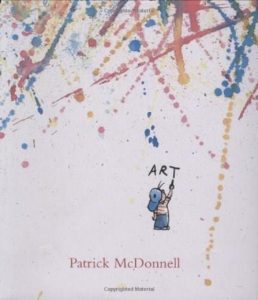 |
Patrick McDonnell’s splatter-patterned Art (Little, Brown, 2006) is the freewheeling tale of an exuberant little boy named Art who makes art – drawing scribbles that squiggle, splotches with blotches, and zigs and zags with crayons, pencils, and paintbrushes. For ages 3-6. |
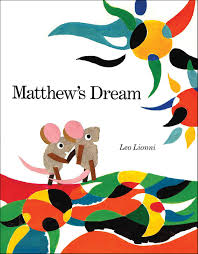 |
In Leo Lionni’s Matthew’s Dream (Dragonfly Books, 1995), Matthew, a young mouse, lives with his parents in a dusty attic draped in cobwebs. Then, after a class trip to the art museum, Matthew decides to become a painter and sets about transforming his dingy world. For ages 3-7. |
| See Matthew’s Dream on You Tube | |
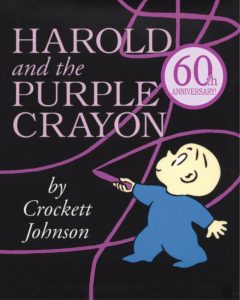 |
In Crockett Johnson’s Harold and the Purple Crayon (HarperCollins, 2005), originally published in 1955, young Harold, after thinking it over for some time, decides to go for a walk in the moonlight. Off he goes, armed only with his purple crayon, with which he draws an entire purple world. A delightful classic for ages 3-7. |
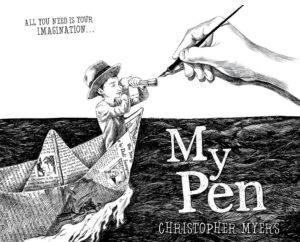 |
Christopher Myers’s My Pen (Disney-Hyperion, 2015) is illustrated in pen-and-ink, which is appropriate because the simple story line is about what a little boy – with a bit of imagination – can do with his pen. (It can ride dinosaurs, put an elephant in a teacup, tell stories, and draw a new face every morning.) The last line encourages readers to do the same: “Let those worlds inside your pen out!” For ages 3-7. |
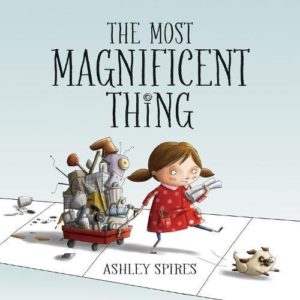 |
In Ashley Spires’s cleverly illustrated The Most Magnificent Thing (Kids Can Press, 2014), a pigtailed little girl decides to build a “magnificent thing.” She designs the thing, collects tools and materials, and sets about constructing it – only to have absolutely everything go wrong. Frustrated, she pitches a fit (“It is not her finest moment”) – until her dog convinces her to go for a calming walk. Restored, she returns to her project and finds a solution. A good pick for young engineers and found-object artists, plus there’s a nice message about perseverance, For ages 3-8. |
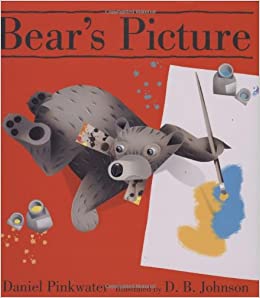 |
Daniel Pinkwater’s Bear’s Picture (Houghton Mifflin Harcourt, 2008) is a tribute to the creative spirit. Bear paints an imaginative picture, only to be confronted by a pair of stuffy gentlemen who point out that bears can’t paint and that bear’s picture is silly. “It is MY picture,” says the bear bravely, “and a splendid one it is” – and goes on to detail all the wonderful things he sees in it. For ages 4-7. |
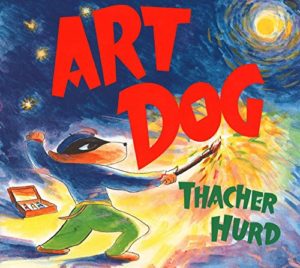 |
The title character of Thatcher Hurd’s Art Dog (HarperCollins, 1997) is by day a guard at the Dogopolis Museum (and admirer of Leonardo Dog Vinci), but by night a masked superhero who uses his paintbrush to apprehend art criminals. For ages 4-8. |
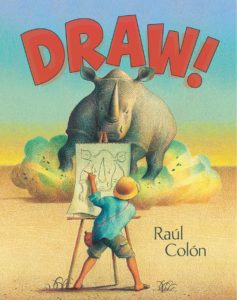 |
In Raul Colon’s wordless picture book Draw! (Simon & Schuster/Paula Wiseman Books, 2014), a little boy reads a book about Africa, then with paper, pencils, and paint, creates a living African adventure of his own. For ages 4-8. |
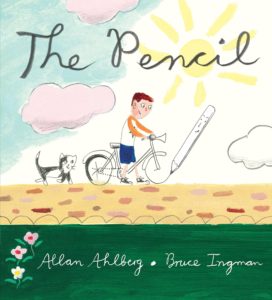 |
In Allan Ahlberg’s The Pencil (Candlewick, 2012), the pencil is all alone – until one day it begins to draw. First it draws a boy, then a dog, a cat, a bicycle, and a whole world of cranky characters, soon with demands and complaints. The pencil, struggling to please, produces a paintbrush which adds color – and then, disastrously, an eraser, which promptly runs amok. For ages 4-8. |
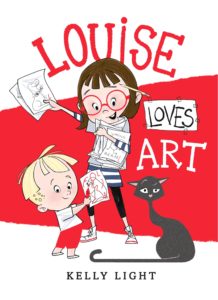 |
In Kelly Light’s Louise Loves Art (Balzer + Bray, 2014), Louise loves to draw – and she also loves Art, her disruptive little brother, who turns her drawings into paper dolls. A humorous story with some helpful reflections from Louise on the nature of art. (“To be a great artist, you have to notice everything.”) For ages 4-8. |
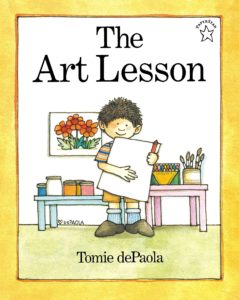 |
In Tomie de Paola’s The Art Lesson (Puffin, 2001), mop-headed Tommy loves to draw – and his pictures are everywhere. He can’t wait to get to school so that he can learn to be a real artist – but first grade is a disappointment; he finds that he’s expected to follow the rules and draw the same thing as everyone else in the class. The somewhat uncomfortable solution is that Tommy does the class drawing first, then can do a second drawing of his own, in his own way. I don’t like Tommy’s first-grade teacher. For ages 4-8. |
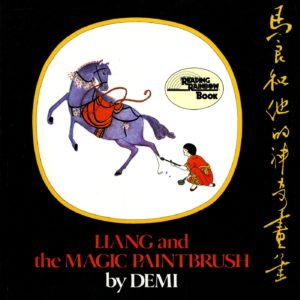 |
In Demi’s Liang and the Magic Paintbrush (Square Fish, 1988), a poor Chinese boy is given a magic paintbrush with which everything he paints becomes real. Then the wicked emperor captures Liang and forces him to use the paintbrush for his own greedy purposes – but defiant Liang manages to thwart the emperor’s plans. For ages 4-8. |
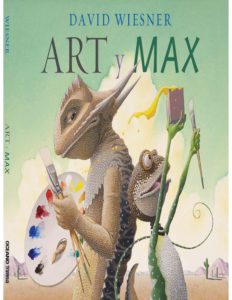 |
David Weisner’s Art & Max (Clarion Books, 2010) is the story of a pair of lizards, serious Art, an artist, and happy-go-lucky Max, who hopes to become one. When Max lacks ideas, Art replies “Well…you could paint me” – and Max, literally, does. There follows a chaotic romp through art media and styles – that ends, eventually, with Max painting a portrait and Art throwing paint at a cactus. A nice lead-in for discussions of the nature of art. (What is art, anyway?) For ages 4-8. |
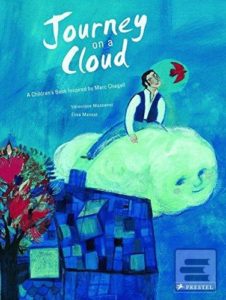 |
Veronique Massenot’s Journey on a Cloud (Prestel Publishing, 2011) is a story based on the paintings of Marc Chagall. The main character, Zephyr, a postman, lives in a little blue village in the mountains where everything always stays the same – so he flies off on a cloud in search of adventure. The book ends with a reproduction of Chagall’s “The Bride and Groom of the Eiffel Tower.” For ages 5 and up. |
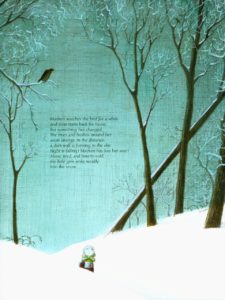 |
In the same vein, see Stepanie Girel’s A Bird in Winter (Prestel, 2011), based on the work of Pieter Breugel; Lucie Albon’s Little Ballerina (Prestel, 2011), based on the work of Edgar Degas; and Veronique Massenot’s The Great Wave (Prestel, 2011), inspired by the famous Hokusai print. |
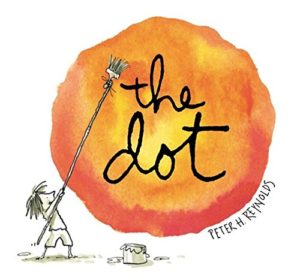 |
Peter Reynolds’s The Dot (Candlewick, 2003) is a must-read for kids who insist that they can’t…well, in this case, it’s draw, but the story applies to a wide range of childhood despairs. Vashti, frustrated in art class, claims she simply can’t draw. When urged by her teacher, she grabs a pencil and angrily makes a dot – “There!” – in the middle of her blank sheet of paper. The teacher (a kind and inspired person) asks her to sign it. Vashti, startled, does – and lo and behold, the next day she finds that her dot has been framed (in gold) and hung on the classroom wall. Immediately Vashti decides that she could make a better dot than that; and soon she has amassed an impressive collection of marvelous dots – so many, in fact, that she soon has an entire art exhibit all her own. For ages 5-9. |
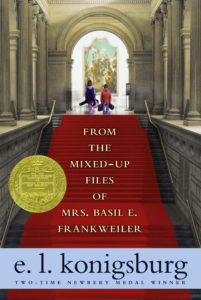 |
E.L. Konigsberg’s From the Mixed-Up Files of Mrs. Basil E. Frankweiler (Atheneum Books, 2007), originally published in 1967, is the story of twelve-year-old Claudia and her little brother Jamie who run away from home to live in the Metropolitan Museum. There they discover a statue of an angel that just might have been carved by Michelangelo, originally the possession of the smart and eccentric Mrs. Basil E. Frankweiler. For ages 8-12. |
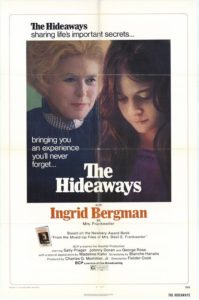 |
The Hideaways (1973), a movie version of the book, stars Ingrid Bergman as Mrs. Basil E. Frankweiler. Rated G. |
| The Metropolitan Museum gets so many questions about From the Mixed-Up Files of Mrs. Basil E. Frankweiler that they decided to devote an issue of Museum Kids to the book. The Mixed-Up Files Issue includes photos and information about the artifacts Claudia and Jamie saw, notes on Michelangelo, and a message from E. L. Konigsberg. (Find out how the book started with a piece of popcorn on a blue silk chair.) | |
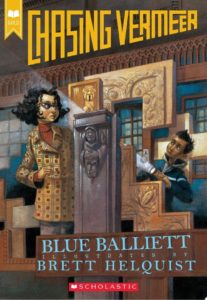 |
In Blue Balliett’s Chasing Vermeer (Scholastic, 2005), clever sixth-graders Petra and Calder deal with patterns and puzzles while trying to discover what happened to a stolen Vermeer painting. For fans of The Westing Game and From the Mixed-Up Files of Mrs. Basil E. Frankweiler, ages 8-12. |
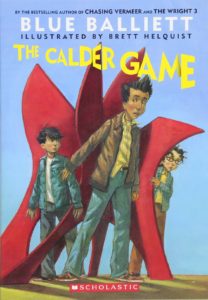 |
Also by Balliett, see The Calder Game (Scholastic, 2010) in which the eleven-year-old art sleuths deal with a mysterious Calder mobile; and Pieces and Players (Scholastic, 2015) in which thirteen valuable pieces of art have gone missing from a small family museum. |
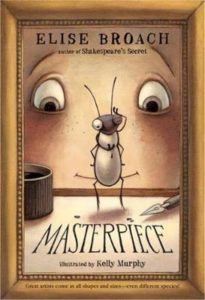 |
In Elise Broach’s Masterpiece (Square Fish, 2010), Marvin, a beetle, lives under the floor of the Pompaday apartment. When James Pompaday turns eleven, the beetles give him a pen-and-ink set as a gift – with which Marvin discovers that he has great artistic talent. Because of Marvin’s drawing ability, he and James become embroiled in a plot to steal a Durer drawing from the Metropolitan Museum. Funny and suspenseful, and Marvin and James make a great pair of friends. For ages 8-12. |
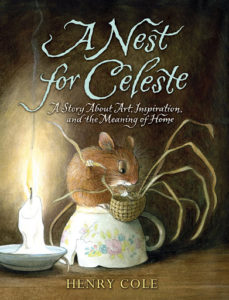 |
In Henry Cole’s A Nest for Celeste (Katherine Tegen Books, 2012), Celeste is talented basket-weaving mouse who lives under the floor of Oakley Plantation where wildlife artist John James Audubon and his assistant, Joseph, spend several months in 1821. Celeste, who has to deal with mean rats and a cat, makes friends with Joseph; and also does her best to save Audubon’s captured birds. (Audubon shot his bird specimens; be warned.) A fat book illustrated with wonderful pencil drawings, reminiscent in style of The Invention of Hugo Cabret. For ages 8-12. |
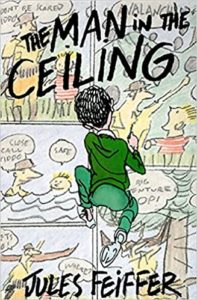 |
Jules Feiffer’s The Man in the Ceiling (HarperCollins, 1995) is a great read for budding cartoonists. Funny and poignant, this is the story of young Jimmy Jibbett who likes nothing better than drawing comics – but it’s not easy pursuing his dream, what with a father who wishes he’d play sports instead of draw, nagging sisters, and trouble with friends at school. For ages 8-12. |
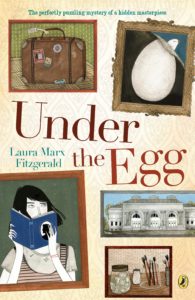 |
Laura Marx Fitzgerald’s Under the Egg (Puffin, 2014) covers everything from Renaissance art to World War II in a mystery involving a painting by Raphael. Thirteen-year-old Theo, struggling to make ends meet in Greenwich Village after the death of her grandfather, Jack, spills a bottle of rubbing alcohol and discovers, under her grandfather’s painting of an egg, what appears to be a Renaissance masterpiece. Theo and new friend Bodhi, daughter of a pair of movie stars, comb New York City, trying to find out the truth about the mysterious hidden painting. For ages 9-12. |
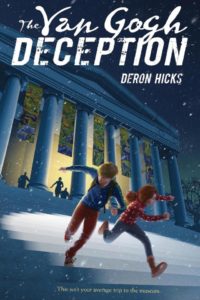 |
In Deron Hicks’s The Van Gogh Deception (HMH, 2018), a young boy is found in the National Gallery in Washington, DC, with no memory of who he is or why he’s there. An un-put-down-able thriller and a race to uncover one of the greatest art frauds of all time. Included are QR code links to famous paintings. For ages 9-13. |
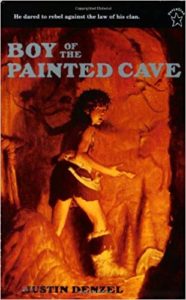 |
Set in Stone Age France, Justin Denzel’s The Boy of the Painted Cave (Puffin, 1996) is the story of young Tao who wants to be a cave painter – but is forbidden, since he’s not a Chosen One, having a crippled food. Isolated from the tribe, he tames a wild dog, meets a shaman named Greybeard who teaches him to paint, and ultimately overcomes adversity to attain his dream. For ages 10-14. |
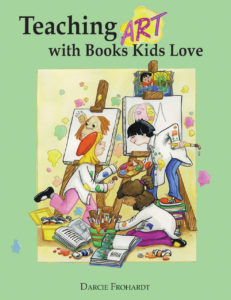 |
Darcie Clark Frohardt’s Teaching Art with Books Kids Love (Fulcrum Publishing, 1999) covers the elements of art, principles of design, and artistic styles, pairing illustrated explanations with fine-art examples, favorite children’s picture books, and hands-on projects. |
| From London’s National Gallery, check out this list of suggestions for using paintings for storytelling. | |
| For older teens and grown-ups: Ten Books Inspired by Paintings. |
